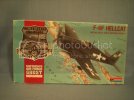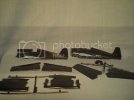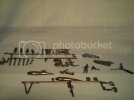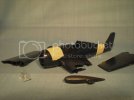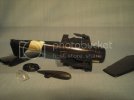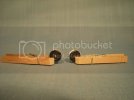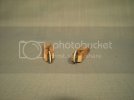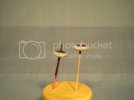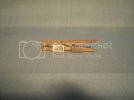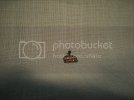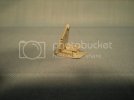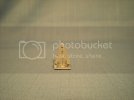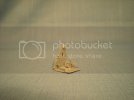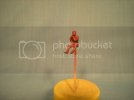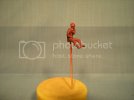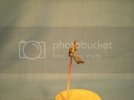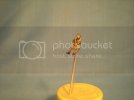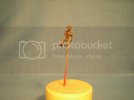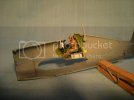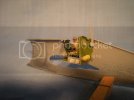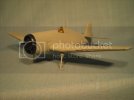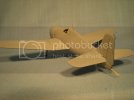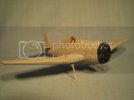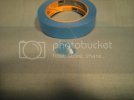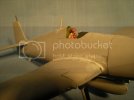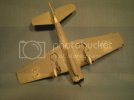Hi, all! Here's a quick progress report on the F6F-3...
One of the areas I wanted to address is the kit's wheels. Here's a shot of the wheels, out-of-the-box:
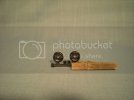
Not bad, I guess? Maybe not too accurate, but the hub is reasonably detailed. But look what we find when we turn them around:
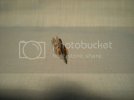
Ants! Sorry, that was an old "Sprockets" reference. No, the wheels are too narrow. Actually, these are the same wheels that Monogram included with the TBF kit. These aren't Grumman wheels! These are some kind of effete Messerschmidt narrow-gauge wheels. Well, here's my idea--I saw the wheels in half, beef them up with some styrene sheet, and make some good ol' corn-fed American wheels out of 'em.
I have an X-Acto miter box and a new razor saw:
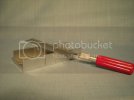
The problem was, how to hold the pieces fast while sawing. So I thought I'd cut some blocks from some plywood scrap, to wedge into the miter box, and put the wheel between the blocks:

Well, as it turned out, it was still too fiddly to hold the blocks in place-they were a hair narrower than the box-and hold the wheel in place, and draw the blade across--in short, I wound up holding the wheel with one hand and while I sawed with the other. Yes, I still have all of my fingertips...
Here is the result-the wheels, sliced in half, with 3 pieces each of .020 sheet styrene sandwiched in between:
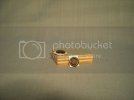
Mmmmmmmmmmm-sandwich, aghlghlghlghlghlghlghlghlghlghlghlghlghl!
Sorry!
Once the wheels have cured, I'll file, then sand, the excess, and see how they look. With any luck, they'll look like the circumferential tread wheels that some F6F's had. If not, well, there's always Squadron...
Some other progress, the center wing section assembled, with the landing struts, and the fuselage, with the -3's window cutouts behind the cockpit:

Despite the lessons of my P-39 build, I still don't read the instructions enough. In this case, I missed an important item for this build. I'm keeping the operating features of the kit, basically, the working landing gear, and the folding wings. Now, though this modling dates back to around 1957, this boxing dates to about 1997, and the instructions omit reference to the parts you'd use for the operating wings. They'd have you just glue the outboard sections to the center section. So, I'm following the instructions, I'd carefully assembled the struts so that they operate, and trapped them between the upper and lower center wing sections, when I noticed the struts for the wings. And I thought to myself, "What the heck?! I've been following the instructions..." And I looked again, and that's when I realized--they left that bit out! Fortunately, the glue hadn't cured, so I was able to pry the pieces apart enough to insert the struts for the wings, and then close it up again. Crisis averted...
Here's one more shot of the fuselage, showing the window cutouts:
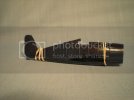
The rubber bands are on just to hold the halves together as I check the fit.
To make the cutouts, I took a piece of Post-It, folded it in half, traced the outline of the window, then cut it out and had 2 templates. I stuck them to the fuselage and scored around them with a Nr. 11 blade. Then I used a fine drill bit and drilled holes along the scored lines, until I could snap off the waste. Unfortunately, the top of the razorback came away, too, because I hadn't drilled enough holes. But I glued it back in place, and a little sanding, and it's good as new. The window openings were filed and sanded to the current shape.
Next efforts will be on adding some cockpit details. And painting the pilot! I love that part!
Hope everyone is doing well, and having fun with the build.
YbiC
Brad
